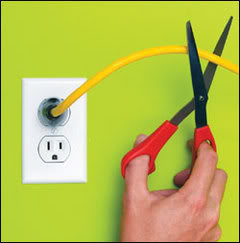ESPN study shows zero loss to cord cutters
March 15, 2011
 Just 0.18 per cent of US households “cut the cord” between the fourth quarter 2010 and first quarter 2011, according to ESPN analysis of Nielsen households. This study defines “cord-cutters” as multichannel homes with a high-speed Internet connection that drop their cable/telco/satellite subscriptions, but retain their broadband connection to watch television. The current rate of 0.18 percent is less than the 0.28 per cent found in ESPN’s previous analysis of cord-cutting from third to fourth Quarter 2010.
Just 0.18 per cent of US households “cut the cord” between the fourth quarter 2010 and first quarter 2011, according to ESPN analysis of Nielsen households. This study defines “cord-cutters” as multichannel homes with a high-speed Internet connection that drop their cable/telco/satellite subscriptions, but retain their broadband connection to watch television. The current rate of 0.18 percent is less than the 0.28 per cent found in ESPN’s previous analysis of cord-cutting from third to fourth Quarter 2010.
This small amount of cord cutting over the past three months was offset by a group of broadcast-only households that became subscribers to multichannel TV and broadband over the same period. These “un-cutters” also represented 0.18 per cent of homes in the Nielsen sample, so the net loss between the groups was zero.
While the popular image of a cord cutter is a home with both multichannel and broadband connections, who decide to opt out of the multichannel cord and rely on streaming content from the Internet, the study shows that the majority (71 per cent) of persons in cord-cutting households were non- or light streamers.
In addition, people who were heavy or medium sports viewers showed zero cord cutting. Heavy and medium sports viewers account for 77 per cent of sports viewing and 87 per cent of viewing to ESPN.
The study showed that the number of multichannel homes adding a broadband connection was over four times as large as the “cord cutter” group.
“We continue to see minuscule amounts of cord cutting among US households,” said Glenn Enoch, vice president of Integrated Media Research, ESPN. “Rather than disturbing the existing avenues of distribution, the continued growth of broadband penetration and use of online video provides a tremendous opportunity for growth in media consumption across all platforms.”
